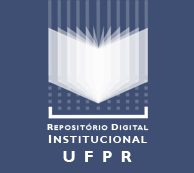Precision and accuracy of sampling methods in thinned Pinus taeda L. stands
DOI:
https://doi.org/10.5380/rf.v52i1.74285Palavras-chave:
Forest inventory, forest census, fixed area method, variable area methodsResumo
Different sampling methods can be used in forest surveys. It is important to know the precision and accuracy of these sampling methods, and which one is the most appropriate in specific conditions of the forest population. The aim of this study was to compare estimates of a forest inventory performed by different sampling methods with forest census results. The sampling methods evaluated were the fixed-area method and the variable-area methods of Bitterlich, Prodan, and Strand. The data were obtained in a 15-year-old thinned stand of Pinus taeda L., located in the municipality of Teixeira Soares, southern Brazil, with a total area of 12.80 ha. Initially, the forest census was carried out, and subsequently, the sample units for each sampling method were distributed in the stand, with a common starting point. The variables used to compare the sample results with the census means were quadratic diameter, number of trees, basal area, and volume, per hectare. Precision and accuracy were evaluated by sampling error and whether the confidence intervals covered the population means, respectively. The fixed-area and Bitterlich methods stood out in precision for all variables analysed. The fixed-area, Bitterlich and Strand methods with proportion to height provided more accurate estimates. The Prodan method provided inaccurate and imprecise estimates for the variables under analysis, except for the quadratic diameter.
Downloads
Publicado
Como Citar
Edição
Seção
Licença
Direitos Autorais para artigos publicados nesta revista são do autor, com direitos de primeira publicação para a revista. Em virtude da aparecerem nesta revista de acesso público, os artigos são de uso gratuito, com atribuições próprias, em aplicações educacionais e não-comerciais.A revista, seguindo a recomendações do movimento Acesso Aberto, proporciona acesso publico a todo o seu conteudo, seguindo o principio de que tornar gratuito o acesso a pesquisas gera um maior intrcambio global de conhecimento.
Conteúdos do periódico licenciados sob uma CC BY-NC-SA 4.0



